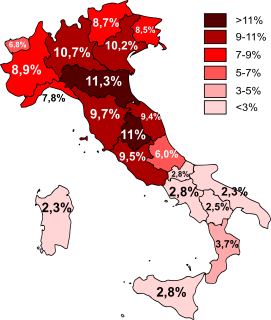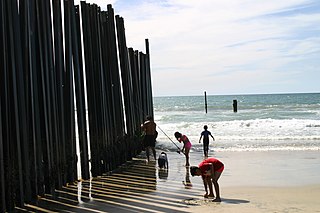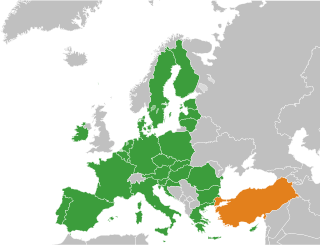Related Research Articles

A coast guard or coastguard is a maritime security organization of a particular country. The term embraces wide range of responsibilities in different countries, from being a heavily armed military force with customs and security duties to being a volunteer organization tasked with search and rescue without law enforcement authority. In most countries, a typical coast guard's functions are distinct from those of the navy and the transit police, while in certain countries has similarities to both.

Relations between the Greek and the Turkish states have been marked by alternating periods of mutual hostility and reconciliation ever since Greece won its independence from the Ottoman Empire in 1830. Since then, the two countries have faced each other in four major wars—the Greco-Turkish War (1897), the First Balkan War (1912-1913), the First World War (1914-1918), including the Greek genocide (1913-1922), and finally the Greco-Turkish War (1919–22), which were followed by the Greco-Turkish population exchange and a period of friendly relations in the 1930s and 1940s. Both countries entered NATO in 1952. Relations deteriorated again after the 1950s due to the 1955 Istanbul pogrom, the Cyprus issue, and the expulsion of the Istanbul Greeks in the 1960s, the 1974 Cypriot coup d'etat, immediately followed by the Turkish invasion of Cyprus in 1974, the Imia/Kardak military crisis in 1996 and subsequent military confrontations over the Aegean dispute. A period of relative normalization began after 1999 with the so-called "earthquake diplomacy", which notably led to a change in the previously firmly negative stance of the Greek government on the issue of the accession of Turkey to the European Union. As of 2021, military tensions have risen again due to conflicts over maritime zones in the Aegean and Eastern Mediterranean.

The European Border and Coast Guard Agency, also known as Frontex, is an agency of the European Union headquartered in Warsaw, Poland, tasked with border control of the European Schengen Area, in coordination with the border and coast guards of Schengen Area member states.

Immigration to Turkey is the process by which people migrate to Turkey to reside in the country. Many, but not all, become Turkish citizens. After the dissolution of the Ottoman Empire and following Turkish War of Independence, an exodus by the large portion of Turkish (Turkic) and Muslim peoples from the Balkans, Caucasus, Crimea, and Crete took refuge in present-day Turkey and moulded the country's fundamental features. Trends of immigration towards Turkey continue to this day, although the motives are more varied and are usually in line with the patterns of global immigration movements. Turkey's migrant crisis was a period during 2010s characterized by high numbers of people arriving in Turkey.

As of 1 January 2017, there were 5,047,028 foreign nationals resident in Italy. This amounted to 8.2% of the country's population and represented an increase of 92,352 over the previous year. These figures include children born in Italy to foreign nationals, but exclude foreign nationals who have subsequently acquired Italian nationality; this applied to 129,887 people in 2014. Around 6,200,000 people residing in Italy have an immigration background. They also exclude illegal immigrants whose numbers are difficult to determine. In May 2020, The Times estimated them to number 600,000. The distribution of foreign born population is largely uneven in Italy: 59.5% of immigrants live in the northern part of the country, 25.4% in the central one, while only 15.1% live in the southern regions. The children born in Italy to foreign mothers were 102,000 in 2012, 99,000 in 2013 and 97,000 in 2014.

Illegal entry is the act of foreign nationals arriving in or crossing the borders into a country in violation of its immigration law. Human smuggling is the practice of aiding people in crossing international borders for financial gain, often in large groups. Human smuggling is associated with human trafficking. A human smuggler will facilitate illegal entry into a country for a fee, but on arrival at their destination, the smuggled person is usually free. Trafficking involves physical force, fraud, or deception to obtain and transport people, usually for enslavement or forced prostitution.
Refugees of the Syrian Civil War are citizens and permanent residents of Syria who have fled the country over the course of the Syrian Civil War. The pre-war population of the Syrian Arab Republic was estimated at 22 million (2017), including permanent residents. Of that number, the United Nations (UN) identified 13.5 million (2016) as displaced persons, requiring humanitarian assistance. Of these, since the start of the Syrian Civil War in 2011 more than six million (2016) were internally displaced, and around five million (2016) had crossed into other countries, seeking asylum or placed in Syrian refugee camps worldwide.

On 3 October 2013, a boat carrying migrants from Libya to Italy sank off the Italian island of Lampedusa. It was reported that the boat had sailed from Misrata, Libya, but that many of the migrants were originally from Eritrea, Somalia and Ghana. An emergency response involving the Italian Coast Guard resulted in the rescue of 155 survivors. On 12 October it was reported that the confirmed death toll after searching the boat was 359, but that further bodies were still missing; a figure of "more than 360" deaths was later reported.
The Migrant Offshore Aid Station (MOAS) is an international humanitarian organisation based in Malta dedicated to providing aid and emergency medical relief to refugees and migrants around the world.
The Blue Sky M incident is a maritime incident which took place on 30–31 December 2014 in the Ionian Sea, when a cargo vessel carrying many migrants from Syria and neighbouring states was abandoned by its crew.

The European migrant crisis, also known as the refugee crisis, is a period characterised by high numbers of people arriving in the European Union (EU) overseas from across the Mediterranean Sea or overland through Southeast Europe. In March 2019, the European Commission declared the migrant crisis to be at an end, although displaced people continued to arrive.

Operation Sophia, formally European Union Naval Force Mediterranean, was a military operation of the European Union that was established as a consequence of the April 2015 Libya migrant shipwrecks with the aim of neutralising established refugee smuggling routes in the Mediterranean. The operational headquarters was located in Rome. The EU mandate for the operation ended on March 31, 2020. Operation Irini is the successor operation.

Alan Kurdi, initially reported as Aylan Kurdi, was a three-year-old Syrian boy of Kurdish ethnic background whose image made global headlines after he drowned on 2 September 2015 in the Mediterranean Sea along with his mother and brother. Alan and his family were Syrian refugees trying to reach Europe amid the European refugee crisis. Photographs of his body were taken by Turkish journalist Nilüfer Demir and quickly went viral, prompting international responses. Since the Kurdi family had reportedly been trying to reach Canada, his death and the wider refugee crisis became an issue in the 2015 Canadian federal election.

Relations between the European Union (EU) and Turkey were established in 1959, and the institutional framework was formalized with the 1963 Ankara Agreement. Turkey is one of the EU's main partners and both are members of the European Union–Turkey Customs Union. Turkey borders two EU member states: Bulgaria and Greece.

This is a timeline of the European migrant crisis from 2004 to the present. It lists migrant boat shipwrecking events from 2004 to 2015. From 2015 to the present, it also lists events connected with land migration and countries' political reactions related to the European migrant crisis.

Proactiva Open Arms (POA) is a Spanish NGO devoted to search and rescue (SAR) at sea. Set up in October 2015, it carried out its first rescue action that same month from its base on the Greek island of Lesbos.
Turkey's migrant crisis, was a period during the 2010s characterized by high numbers of people arriving in Turkey. Turkey became the top refugee receiving country in 2014 (1,587,374), mid-2015 (1,838,848), and mid-2016 (2,869,421) reported on UNHCR registered refugees by country/territory of asylum [sort each year on descending]. Turkey's refugee breakdown in 2019 was "neighbor countries:" Syrians 3.6 M, Iraqis 142,000, Iranians 39,000, "Asia:" Afghans 172,000, "Africa:" 11,700. Reported by UNHCR in 2018, Turkey hosted 63.4% of all the "registered Syrian refugees." As of 26 June 2020, refugees of the Syrian Civil War in Turkey numbered 3,591,892.
According to the United Nations, human smuggling is defined as “the procurement, in order to obtain, directly or indirectly, a financial or other material benefit, of the illegal entry of a person into a State Party of which the person is not a national or a permanent resident.” Civil unrest in the Middle East in the 21st century and changing European immigration policies have been seen numbers of refugees fleeing their home countries. Migrants rely on human smugglers to assist them in illegal border crossings to Europe. With the help of human smugglers, refugees use different routes to the EU due to varying immigration policies. In between January and September 2015, the most common was the Eastern Mediterranean. Additionally, 2015 saw a major increase in the number of migrants making the Eastern Mediterranean crossing; “There were nearly eight times more detections via the Eastern Mediterranean route in the first nine months of 2015 (401,000) than during the whole of 2014 (51,000).” The European Migration Network reports that the secondary movements of refugees upon arrival in Europe are heavily influenced by human smugglers. According to the UN, human smuggling is a criminal offense. However, the number of human traffickers in Turkey increased from 4,641 in 2017 to 6,278 in 2018.
The Alarm-Phone-Initiative is a project operated since 8 October 2014 by volunteers from Europe, Tunisia and Morocco, which is committed to the sea rescue of refugees. The 'Alarm-Phone-Initiative' website provides a web resource to help refugees in need of rescue at sea, while the 'Watch The Med' website monitors and summarises events involving refugees in the Mediterranean.
References
- 1 2 "Smugglers abandon migrant ship off Italy in new tactic to force rescue". The Independent. 2 January 2015. Retrieved 3 January 2015.
- ↑ "Abandoned migrant ship Ezadeen reaches Italy". BBC. 3 January 2015. Retrieved 3 January 2015.
- ↑ "Abandoned migrant 'ghost ship' arrives in Italy carrying hundreds of Syrian refugees". The Independent. 3 January 2015. Retrieved 3 January 2015.